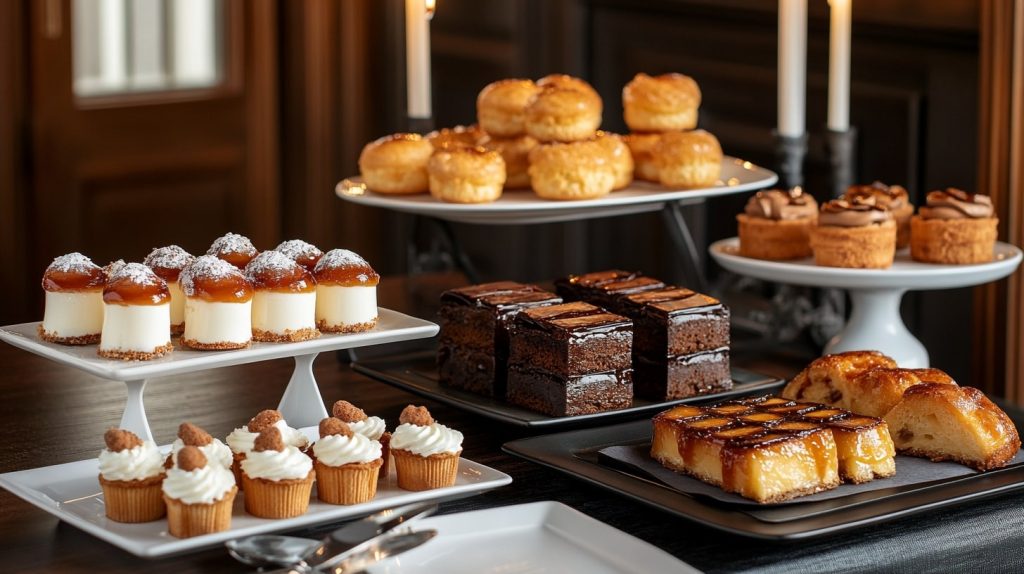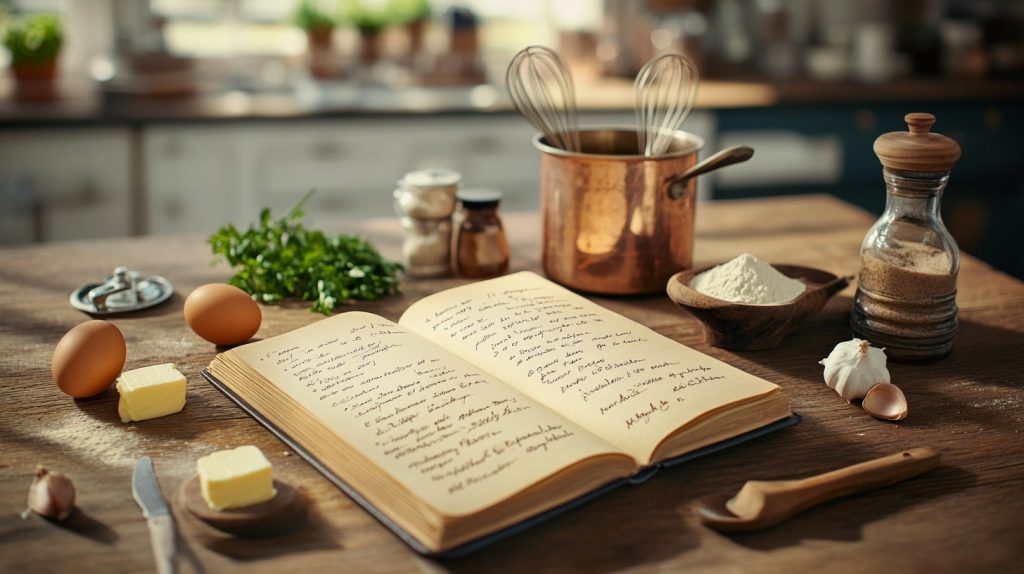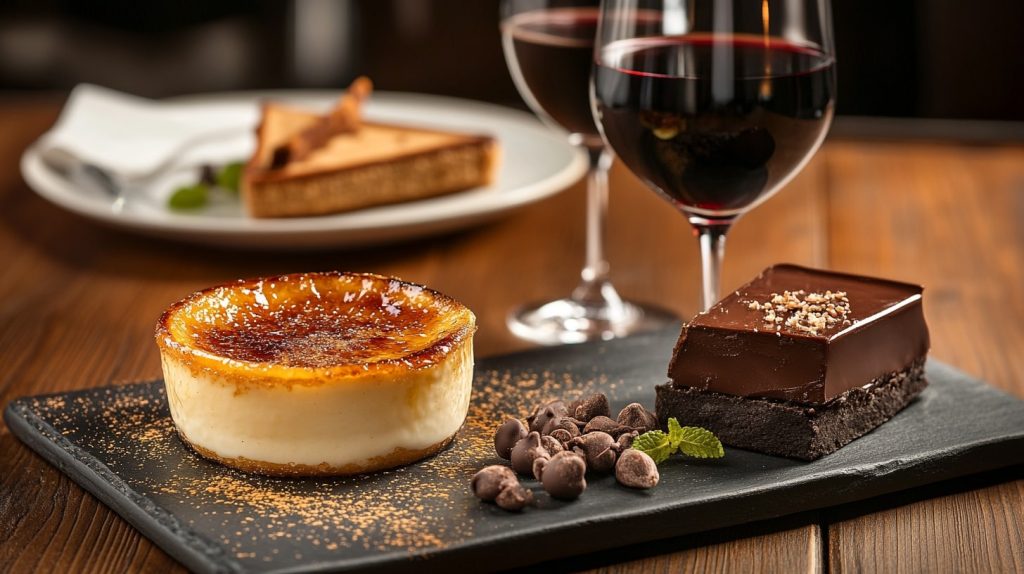
French people are known to spend a lot of time at the table, eating and talking. So much that festive lunches can sometimes merge into apéritif and dinner without anyone batting an eyelash.
Considering this, setting a French table is more than just placing plates and silverware—it’s an art that reflects elegance, tradition, and hospitality.
Whether hosting a formal dinner or a casual gathering, understanding the essentials of a French table setup adds charm and sophistication to any meal. From carefully arranged utensils to stylish glassware and decorative touches, each element plays a role in creating the perfect dining experience.
This guide will walk you through the fundamentals of French table etiquette, helping you bring a touch of France to your home and impress guests with an authentic and beautifully arranged table setting.
Essential Elements of a French Table Setup
Whether it’s a formal table setting—with carefully arranged silverware, crystal glasses, and decorative centerpieces—or an informal table set up, with a simpler, cozy charm, beautifying the table enhances the dining experience.
More than just aesthetics, it embodies the French philosophy of savoring meals, engaging in conversation, and celebrating life’s moments.
Step-by-Step Guide to Setting a French Table
Start with the Tablecloth
Start your table setup with a well-chosen tablecloth, setting the foundation for an elegant dining experience.
Choose high-quality fabrics like linen or cotton for a refined look. Neutral tones offer versatility, while patterns add character.
Ensure it fits properly, draping evenly without overwhelming the table’s natural beauty, whether round or square. It should hang 20 to 40 centimeters on the sides.
Place the Dinner Plates
Position the plates in the center of each place setting, about one inch from the edge of the table for balance and comfort.
Make sure they are evenly spaced to create a harmonious look. If using charger plates, set them first for elegance. Plates should align with cutlery to create a polished and inviting presentation.
If using a bread plate, place it in the upper left corner, above the forks.
Arrange the Cutlery
When setting a French table, utensils (les couverts) are placed with precision and elegance.
- Forks go on the left of the plate, tines facing down, à la française.
- Knives and spoons are placed on the right, with knife blades facing inward.
- Utensils are arranged in order of use, from the outside in.
- Dessert spoons or forks are often placed above the plate.
Proper utensil placement ensures both functionality and aesthetics, reflecting the French appreciation for refined dining etiquette.
Position the Glassware
Glasses are arranged above the knives, on the right, from largest to smallest, in order of use.
Traditionally, a French table includes a water glass, a red wine glass, and a white wine glass. For formal settings, a champagne flute may be added.
Glasses should be aligned diagonally or in a triangle for a refined, elegant presentation.
Add Napkins
Folded simply or styled creatively, linen or cotton napkins complement the table decor while enhancing the dining experience.
They are traditionally placed on the left of the plate or atop it for a formal touch.
Include Bread Plates and Butter Knives
In a French table setting, the bread plate is placed to the left of the main plate, often accompanied by a small butter knife resting on top or beside it. Bread is typically torn by hand rather than cut. This detail enhances the meal’s elegance while maintaining a practical, refined touch.
Create a Centerpiece
A centerpiece adds charm and elegance to a French table setting. It can feature fresh flowers, candles, or seasonal elements, enhancing the dining experience without overwhelming conversation. Keep it low for visibility and harmonize colors with table decor. A well-chosen centerpiece creates a warm, inviting ambiance for guests to enjoy.
Add Personal Touches
Personal touches like place cards enhance a French table by elegantly directing guests to their seats. They help create a thoughtful, organized seating arrangement while adding a unique touch. Stylishly handwritten or creatively designed, place cards make guests feel special and contribute to a refined dining atmosphere.

Key Mistakes to Avoid When Setting a French Table
When setting a French table, elegance and harmony are key, so avoid these common mistakes.
- Never leave food packaging on the table—serve everything in proper dishes.
- Avoid overcrowding with excessive decorations that obstruct conversation.
- Mismatched cutlery or jarring tableware can disrupt the refined aesthetic, so aim for cohesion.
- Plastic tablecloths or creased polyester fabrics diminish the sophistication of a proper French setting—opt for linen or cotton for a polished look.
Thoughtful presentation enhances the dining experience, reflecting the French tradition of beauty and refinement at the table.

Conclusion
Setting a French table is all about style, charm, and making every meal feel special. Whether it’s a casual lunch or an elegant dinner, the right setup brings warmth and sophistication.
With beautiful tableware, thoughtful touches, and a relaxed yet refined vibe, you’ll turn any meal into a true French dining experience where slow food is enjoyed without guilt or rush!
Bon appétit!
FAQ
What are the origins of the French table setup?
The French art de la table dates back to the royal courts of the 17th century, particularly under Louis XIV, when elaborate dining became a symbol of refinement and status, and when long meals became the fashion. After the French Revolution, the practice democratized, especially among the emerging bourgeoisie. Soon, a whole restaurant industry developed, with celebrity chefs drawing up table etiquette books, turning them into best-sellers.
What are some French serving rules?
Elegance, orderliness and hospitality are all emphasized in French service. Meals are typically served in courses, beginning with an appetizer, followed by the main dish, cheese, salad, and dessert. Plates are served from the left and cleared from the right. Wine is poured carefully so that glasses are never overfilled. Bread is placed on a side plate, never directly on the table (except in informal, everyday dining). Guests wait for the host to begin eating, and hands remain visible on the table, reflecting the refinement of French dining etiquette.



